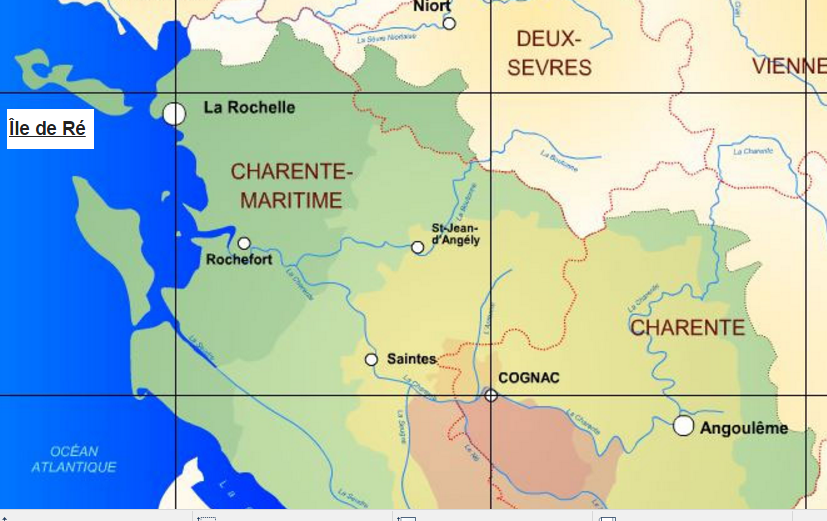History of Cognac
The Dutch, Wine and Salt in the Charente Before Cognac
Prior to becoming a world famous producer of the finest brandies, Cognac a town in Charente, a department in what is now known as Nouvelle-Aquitaine region in the south west of France, was known for its wine and salt. Salt was an essential element used to preserve foods in the late medieval period. As such, salt was a widely desired and sought after commodity. By the 12th century, Cognac was a thriving town due to its expanding international salt trade.
Salt was harvested in abundance along the west coast of France in the salt marshes about fifteen miles away from Cognac. International salt traders were drawn to south west France for the salt and were further lured by the local wines of Charente.
Great fortunes were made in the sale of salt. The Gabelle Mansion, situated on 6 Rue Saulnier (Street of Salt Harbor) in Cognac was built from the proceeds of the salt trade in the mid-16th century and remains as a converted warehouse for storing Cognac. The imposing Gabelle Mansion was named after “the Gabelle”, a tax on salt that originated in the mid-14th century.
Cognac benefited for centuries from the wine and salt trade. In the mid-16th century, brandy began to be produced in the Charente. The first known reference to “Cognac” meaning brandy appeared in a sales contract in 1617.
In 1624, a distillery was established at Tonnay-Charente on the Charente River about 40 miles north west of Cognac. The new distillery was established by two Dutchmen. The Dutch had pioneered the concept of mass producing distilled malt wine into spirits with the resultant Jenever (Gin) that could survive long sea and transatlantic shipments. While the process of distilling wine into Brandy in Cognac is often referred to as “charentaise”, it is more of a transported Dutch invention than a local one.
Distilled wine is drunk in lesser quantities than undistilled wine, and can therefore be transported less expensively. By the mid-16th century, however, it was becoming apparent that brandy distillers of Cognac were beginning to produce a product that was developing an international reputation that had nothing to do with cost of transportation. Indeed, Cognac was just beginning its centuries-long journey as the producer of the world’s finest brandies, or simply “Cognac”.
Sources:
The World of Cognac, Gilbert Delos;
The Story of the World’s Greatest Brandy, Nicholas Faith

